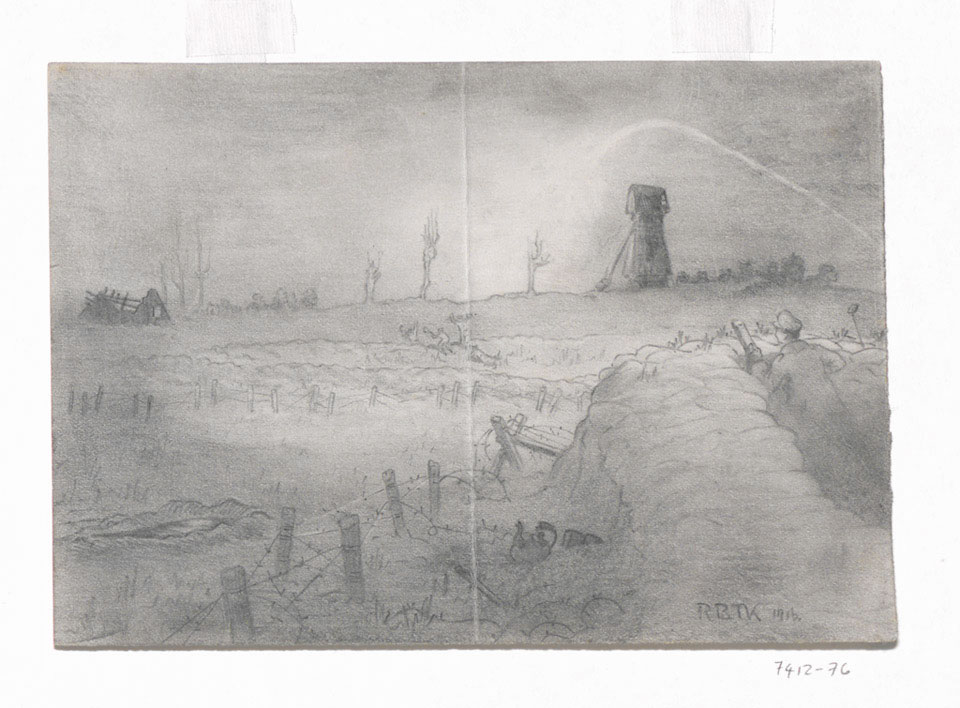
Online Collection
'Plugstreet - a German working party dispersed by machine gun fire after being shown up by a pistol light.', 1916 (c)
Pencil drawing by Lieutenant Richard Barrett Talbot Kelly MBE, MC, RI (1896-1971), Royal Field Artillery, 1916. The caption continues, 'They have been working on a communication ditch behind their front line.'
A British flare illuminates a shattered landscape with trenches and a sailess windmill. A group of German soldiers are fired on. In trench warfare, working parties from both sides would use the cover of night to dig or repair trenches or breaks in the barbed wire.
'Plugstreet' was slang for Ploegsteert in West Flanders. The village was within what became the 'Ypres Salient', a heavily fought over part of the Western Front. Ploegsteert Wood was, after heavy fighting in 1914-1915, a relatively quiet sector of the salient, used by British and Commonwealth troops as a rest area. It is now the site of many Commonwealth War Graves Commission cemeteries and memorials.
Richard Barrett Talbot Kelly was commissioned as a 2nd lieutenant in the Royal Horse Artillery in 1915. He transferred to the 52nd Brigade of the Royal Field Artillery. He arrived in France in May 1915, serving in the 9th (Scottish) Division. As part of an 18-pounder gun battery crew, Talbot Kelly took part in many of the major offensives of the Western Front. He regularly served as a Forward Observation Officer, tasked with spotting where the artillery shells were landing. The unique vantage point of the battlefields that this job gave him, inspired him to draw his experiences. Talbot Kelly also witnessed the aerial dogfights over the Western Front and many of his works reflect his fascination with the war in the air.
Talbot Kelly was wounded by a German artillery bombardment at Passchendaele in August 1917. After recuperating back in England he returned to France in the Spring of 1918. Talbot Kelly went on to teach camouflage at the School of Instruction for Royal Horse and Field Artillery (Larkhill). He applied to join the Royal Air Force but was posted to the flying school just as the war ended.
NAM Accession Number
NAM. 1994-12-76-1
Copyright/Ownership
Not NAM Copyright, Artist's Copyright
Location
National Army Museum, Study Collection
Object URL
https://collection.nam.ac.uk/detail.php?acc=1994-12-76-1

